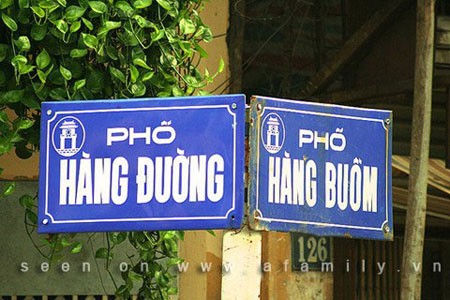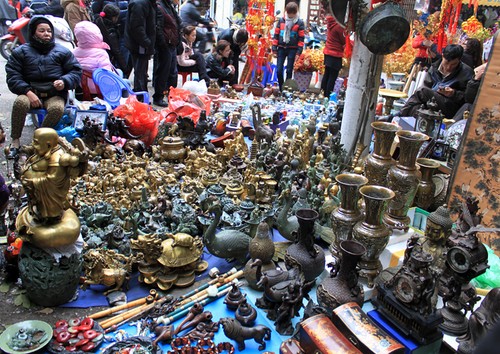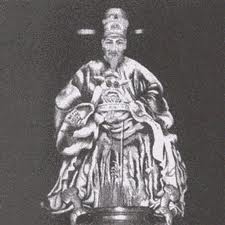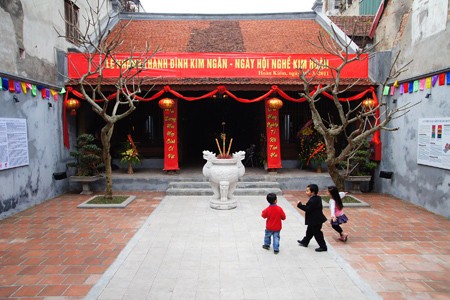(VOVworld)- Hanoi’s 36 ancient guild streets have names beginning with the word “Hang” which refer to the craft or trade once associated with that street. As time has passed, the commerce in many “Hang” streets has changed, yet the temples in the Old Quarter dedicated to the ancestors of the original crafts remain an important part of Hanoi’s unique culture.

Hanoi has always been a venue of talented craftsmen. They came to Hanoi to ply their crafts setting up 36 trade guilds centered in 36 different streets. Over centuries, the artisans who migrated from rural areas, have brought to the city their traditional crafts with outstanding techniques. Through many ups and downs, many streets in the Old Quarter still retain their traditional trade. For example Hang Ma street still sells votive papers, Hang Thiec or “Tin” street specializes in tin items, Hang Dong or “Bronze” street casts and sells bronze products while silver jewelry can be found in Hang Bac or Silver street.

Hang Dong street
Despite their good business in the city, the artisans and their children never forget their roots. They set up temples to worship their ancestors who handed down the craft to them. There are dozens of temples scattered in the Old Quarter. In Yen Thai alley in Hang Gai street, there is “Tu Dinh Thi” temple worshiping the ancestor of the embroidery craft, Le Cong Hanh, who came from Quat Dong village in Thuong Tin district on the outskirts of Hanoi. Do Thi Ngat, a caretaker of the temple says: "The name of the temple Tu Dinh Thi can be explained as follows: Tu means embroidery, Dinh means a worshiping temple and Thi means market. Long ago, people from Quat Dong came here to do business and set up the temple. Traders from Hang Trong came here to buy embroidery products to sell. Embroiderers often come here to worship their ancestors though they have another temple in their hometown".

Le Cong Hanh- founder of embroidery craft
|
Among the guild streets in Hanoi, Hang Bac or Silver street is the busiest and most prosperous. Its jewelry craft still flourishes today. Previously, Hang Bac drew outstanding jewelry artisans from Chau Khe in Hai Duong, Dong Xam in Thaibinh and Dinh Cong in Hanoi. They set up businesses in Hanoi and together built a temple at 42 Hang Bac street which is known as “Kim Ngan” temple. Nguyen Thi Nga, a silver shop owner in Hang Bac street says: "My family opened this shop long ago. My father-in-law started his business here and then my husband and now my children follow this trade. My father in law comes from Chau Khe village, which was the birth home place of the jewelry craft in Hung Yen province. Every year, we return to our home village to worship our ancestors".

The death anniversary of the craft ancestors is the most exciting day for the craftsmen. On this occasion, ceremonies to honor the craft ancestors are held, including performances. The Hanoi Old Quarter Management Committee organizes exhibitions and activities to promote the 36 streets and their guilds. Phan Tan Long, Head of the Committee says: "Hanoi’s Old quarter is unique because the local people still live in the relic sites. Under our preservation program, we will move people out of the relics and upgrade the infrastructure. We have finished the restoration of Kim Ngan temple in Hang Bac street and the ancient house at 28 Hang Buom street".
To Tuan